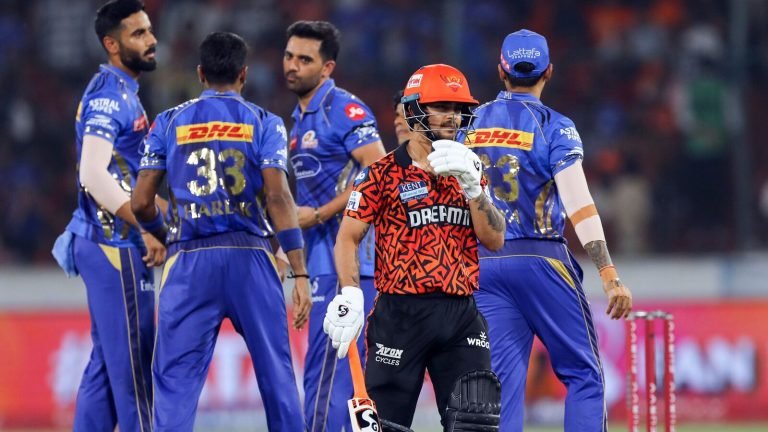Ishan Kishan became the talk of the town on Wednesday evening for his bizzare dismissal against Mumbai Indians in an Indian Premier League (IPL) game at the Rajiv Gandhi International Stadium in Hyderabad. The Sunrisers Hyderabad batter tried to nudge a Deepak Chahar delivery down the leg side.
The ball was collected by Mumbai Indians wicketkeeper Ryan Rickelton and neither the South African nor Chahar showed any inclination to appeal for a caught behind. On-field umpire Vinod Seshan, who was initially close to declare the ball wide, but soon changed his mind seeing Kishan walk away, indicating the batter has edged the ball.
While everyone through it was a faint edge from Kishan, TV replays showed that the former Mumbai Indians star didn’t even made contact with the ball as there was no spike on the UltraEdge either.
What does the laws of cricket say?
According to the MCC laws of cricket article 31.7 states “an umpire shall intervene if satisfied that a batter, not having been given out, has left the wicket under a misapprehension of being out. The umpire intervening shall call and signal Dead ball to prevent any further action by the fielding side and shall recall the batter.
A batter may be recalled at any time up to the instant when the ball comes into play for the next delivery, unless it is the final wicket of the innings, in which case it should be up to the instant when the umpires leave the field.” In this case, instead of making Kishan wait and check whether he was out of not, the on-field umpire raised his finger.
What happens when a batter walks off even if not out?
The laws of cricket also speaks about a batter, who is not out, but if crossed the boundary line will be considered out. For example, a batter is walking back to the pavilion despite being not out. The on-field umpires can still call him upon checking the replays. But if he had crossed the boundary line, he will be given out.
Stay updated on all the action from the IPL 2025. Check the IPL 2025 Schedule, track the latest IPL 2025 Points Table, and follow the top performers with the Orange Cap and Purple Cap.


